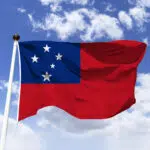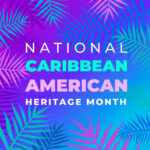National Oceans Month is celebrated each year in June and it’s time to honor the element that is essential to the planet Earth. The ocean is known as the “lungs of the Earth” and very rightly so. It gives us many important foods and medicine. In fact, the majority of the Earth’s oxygen also comes from the ocean. It also keeps the climate in check.
History of National Oceans Month
Each year, the ocean is celebrated in all its glory in the month of June. It is a beautiful time to come together and celebrate the ecosystem that is essential to the survival of people and marine life. The ocean is home to majestic sea life such as fish, turtles, colorful coral reefs, and unique organisms.
Every year, a proclamation designating June as National Oceans Month is issued. Additionally, the United Nations General Assembly designated June 8 as World Oceans Day. World Oceans Day was first declared in Rio de Janeiro at the Global Forum on June 8, 1992.
National Oceans Month was conceptualized to recognize our connection to the ocean and to raise awareness about the dangers it faces. It is unfortunate that each year approximately 8 million metric tons of plastic is thrown into our oceans. Additionally, it is found that around 4 billion plastic microfibers litter the deep sea. Another challenge that our oceans face is the case of overfishing. This has an adverse impact on the thousands of species that have made the ocean their home. Marine life should not be subject to such harsh conditions and humans should endeavor to protect it.
Thus, in the current times, it has become imperative to take necessary action to treat our ocean’s resources with respect. We also have to keep in mind the future generations who will also need the ocean to live a prosperous life.
National Oceans Month timeline
Polynesian seafarers create the first oceanographic navigational maps, also known as stick charts.
The first true scientific research expedition to measure ocean characteristics is undertaken.
Sonars are invented to help find submarines and map the ocean.
Oceanographers collect rocks and sediment from the bottom of the ocean and figure out their age through ocean drilling.
National Oceans Month FAQs
What is the largest ocean in the world in 2020?
The world’s largest and deepest open is the Pacific Ocean, which covers approximately 63 million square miles and contains more than half of the free water on Earth.
What lives at the bottom of the ocean?
Ocean life is extremely vast and difficult to map due to which many marine organisms still haven’t been studied. However, the most abundant life forms that can be found in the ocean are planktons, plants, mammals, fish, marine reptiles, and so forth.
How are oceans divided?
Geographers divide the ocean into five major basins: the Pacific, Atlantic, Indian, Arctic, and Southern.
How To Celebrate National Oceans Month
Connect with the ocean
Go to your nearest ocean and connect with it. Soak in the beauty and calm that it provides. Admire the serene beauty of it. You can make it a day-long activity with your friends and family.
Pledge to preserve the ocean
Take a pledge to preserve and protect the ocean. You can put your words into action by partaking in an ocean clean-up drive. Support a local organization that works towards keeping the beaches and surrounding areas of the ocean clean, thus ensuring that minimal to no waste enters it.
Watch an ocean documentary or movie
There are plenty of movies and documentaries available that show you the marvels of ocean life and why we must protect it. This will help you understand the gravity of the situation and enable you to act responsibly.
5 Facts About The Ocean That Will Blow Your Mind
Less than 5% explored
It is difficult to study ocean life, hence the reason only 5% of the planet’s oceans have been explored.
Longest mountain chain in the ocean
The planet’s longest chain of mountains, the Mid-Ocean Ridge, stretching across a distance of 40,390 miles, is almost entirely beneath the ocean.
Pacific Ocean is wider than the Moon
At its widest point, the Pacific Ocean from Indonesia to Colombia is wider than the Moon.
Half of the U.S. is below the ocean
The borders of the U.S. extend 200 nautical miles away from the shore and thus half of the country lies below the ocean.
Three million shipwrecks in the ocean
According to the United Nations Educational, Scientific and Cultural Organization, the oceans have around three million shipwrecks.
Why National Oceans Month Is Important
They provide the oxygen we breathe
The National Ocean Service states that oceans produce over 60% of the world’s oxygen. This makes them extremely important to the well-being of all individuals.
They are essential to marine life
There is a vast marine life that lives in our deep blue seas. From fish and turtles to coral reefs, you can find unique life under the water everywhere. Oceans are their homes and National Oceans Month helps us to remember that.
Oceans help to combat climate change
People often underestimate the oceans’ power to combat climate change. Oceans protect and restore seagrasses, salt marshes, and mangroves. They also absorb carbon dioxide from the atmosphere at a higher rate than terrestrial forests. Thus, they are integral to the health of our planet.
National Oceans Month dates
| Year | Date | Day |
|---|---|---|
| 2026 | June 1 | Monday |
| 2027 | June 1 | Tuesday |
| 2028 | June 1 | Thursday |
| 2029 | June 1 | Friday |
| 2030 | June 1 | Saturday |



















































































































